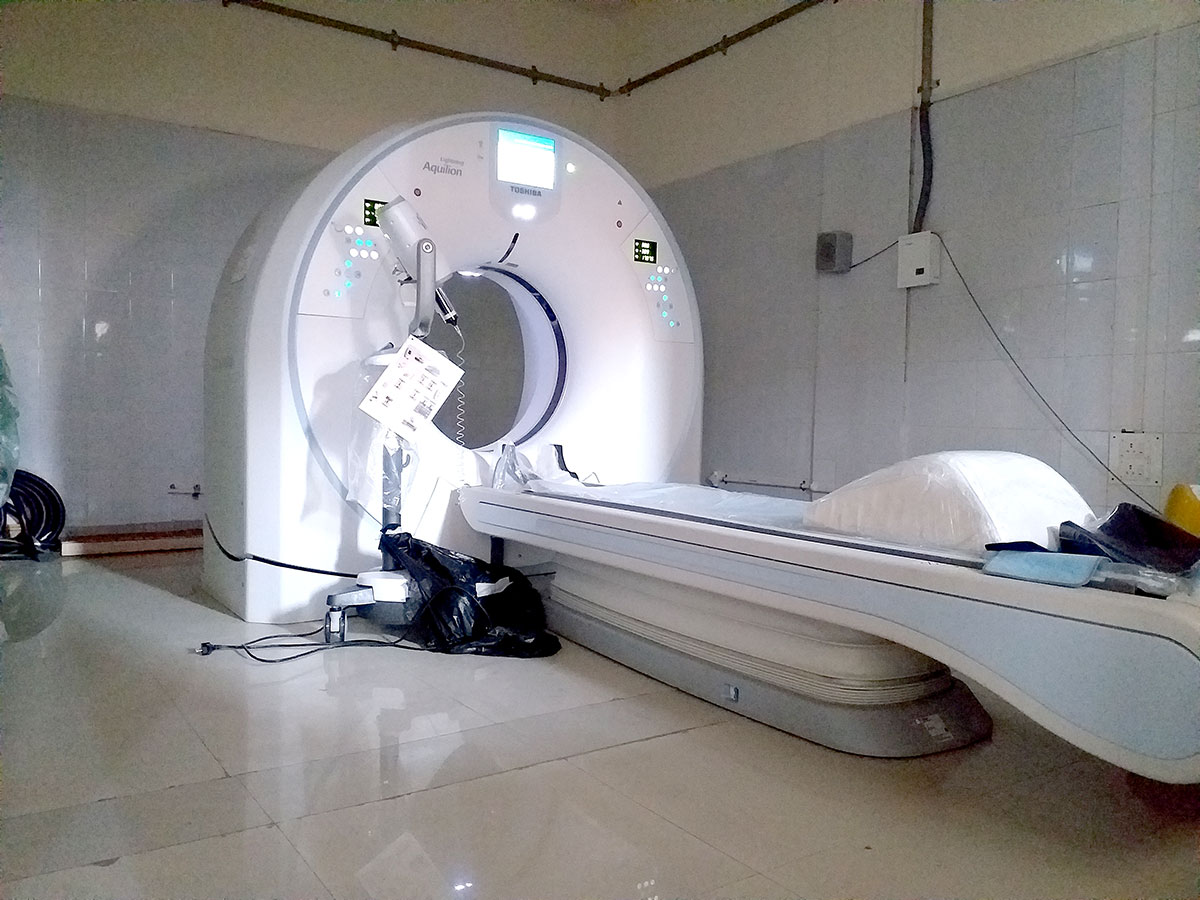With almost the entire ground level of multi-storey commercial spaces reserved for trade, the medical laboratories and diagnostic centres operate upstairs. In the absence of the lifts, patients – mostly pregnant women, the disabled and the elderly, face a challenging task in reaching these centres, reports Babra Wani
A woman in advanced pregnancy slowly walks up the dark stairs, stopping to catch her breath almost at every step. Two other women hold their bellies to relieve the weight inside. Gripping the railing, some move ahead and a few sit to take a bit of rest. The women head towards diagnostic centres and clinics, mostly located on the first or second floor near Iqbal Park, Srinagar.
This scene repeats across locations. It is not just pregnant women but also the elderly and seriously injured.
The Hard Climb
Sameena, in her second trimester, climbs the stairs to a diagnostic centre for ultrasound and sonography. “Climbing these stairs is tiring,” she said, breathing heavily. “Reaching diagnostic centres is always a task.”
Upon finally reaching the centre, she waits outside. Over six other women, mostly in advanced pregnancy, also wait their turn.

“I am exhausted,” one woman stated. “Climbing these in this heat is exhausting,” pointing at the dark stairs.
Doctors often advise pregnant women to avoid climbing stairs and overexertion. But diagnostic centres located on second or third levels of multi-story buildings are often exhausting, one woman laments.
Adding to Disability
This issue affects not just pregnant women but also people with disabilities, especially walking disabilities.
Ghulam Nabi (name changed), 60, of Chrar-i-Shareef steps out of a bus near Iqbal Park. His daughter hands him crutches. With her support, he slowly walks towards the complex.
Reaching the diagnostic centre for X-rays is challenging. With his daughter’s help, he begins the extremely difficult climb. His daughter patiently holds a bag and walks with him. “It is very difficult for my father. He is limping but has to climb these stairs. Since he cannot hold the railing, I have to help,” she said patiently. She stays close, helping him up and preventing any accidents.
Countless such patients must climb the stairs to reach their destination, some with back issues, knee problems, or fractures. They have no other option.
A man in his eighties rests thrice while climbing. “I can barely walk, but do I have any other option?” he said, holding his knees. “I have to climb two more flights before reaching where I need to be.” At Iqbal Complex for a CT scan, he struggles up different stairs, bothered by his weak, old body.

Crisis Everywhere
This issue exists not just in one place. In Karan Nagar, many diagnostic centres and clinics are above ground level.
“I suffered a leg injury in an accident requiring surgery,” said Haifa, 27. “Even in my immobility, I had to climb stairs to reach the diagnostic centres, causing complications. It was terrible.”
In certain cases, some diagnostic centre managers send technicians downstairs to collect the samples. This, however, is impossible when the patients have to sit or get through the immovable machines.
Outside City
It is, in fact, a Kashmir-wide trend. Builders usually reserve the ground floor for the shop line, spearing the other levels for offices and diagnostic centres. Though quite a few have installed lifts, almost all these buildings offer staircases.
In Budgam’s Khansahib, most clinics and diagnostic centres are on the first, second or third floors of complexes. Patients must climb 25 stairs, sometimes more. “It’s a problem and inconvenient for suffering patients. But what can we do, Srinagar is the same,” says Areeba, a Budgam resident accompanying her mother to a clinic.
In Bandipora reaching most diagnostic centers is challenging. Patients who can barely climb stairs are often moved by wheelchairs or carried by people.
After climbing long flights, people often wait in long lines for their turn. While important for determining medical issues, difficult-to-reach diagnostic centres can add to patients’ woes, as they often have other health complications.
“Though my condition requires frequent tests and visits, I often delay them. At this age climbing up and down so many stairs is difficult. It leaves me in pain for days,” said Sara Begum, 86. “These facilities should be on the ground floor.”
Other Issues
Climbing long flights of stairs is not the only issue. Bisma, 26, has been wheelchair-bound for a year due to a leg dislocation. She said even washrooms at these facilities are not disability friendly. “For patients like me who can’t use Indian toilets, it’s extremely difficult. We often have to hold it in for hours,” she asserted. “It’s also difficult for pregnant women.”
It’s important to drink water before a USG, and then the patient urgently needs the washroom, which may be available but do not suit the patient.
The Other Side
Understanding this crisis, off late, some diagnostic centres now offer home services, with technicians visiting patients to collect samples and sending results via social media. “My father has cancer. I looked for centres not too inconvenient for him or us. I was pleasantly surprised to find such centres,” said Mudasir, a Rajbagh resident. “It saves time.”
Home services are expensive and it is limited to blood sample collection only.
Official Take
According to the Director of Health Services Kashmir, Dr Mushtaq Ahmad Rather, all diagnostic centres follow Government of India guidelines. “However, I was unaware of these issues. The department will look into them. We’ll send teams to these centres and work on the issues,” he stated.















